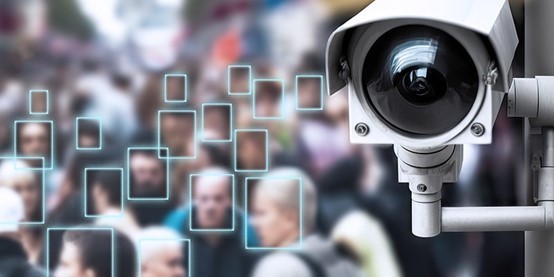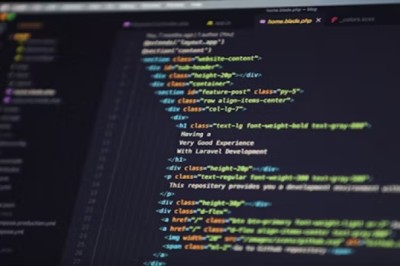views

Public spaces, including parks, streets, shopping centers, and transportation hubs, are integral to the social and economic fabric of urban environments. Ensuring the safety and security of these areas is paramount for maintaining public confidence, economic stability, and overall quality of life.
Video surveillance systems have emerged as a crucial tool in the effort to enhance public safety. These systems not only deter criminal activities but also provide law enforcement and security personnel with valuable tools for monitoring and responding to incidents in real time.
This article explores how video surveillance improves safety in public spaces, examining various aspects such as crime prevention, incident response, community trust, and technological advancements.
Crime Prevention and Deterrence
One of the primary benefits of video surveillance in public spaces is its role in crime prevention and deterrence. The presence of cameras can act as a powerful deterrent to potential criminals, as they are less likely to engage in unlawful activities when they know they are being watched. Studies have shown that the installation of surveillance cameras can lead to a significant reduction in crime rates, particularly in areas prone to vandalism, theft, and violent crime. For instance, a study conducted by the Urban Institute found that the introduction of CCTV cameras in Baltimore, Chicago, and Washington, D.C., resulted in noticeable decreases in crime rates in those cities.
The visibility of cameras in strategic locations sends a clear message to potential offenders that their actions are being monitored, thereby reducing the likelihood of crimes occurring. Moreover, video footage can serve as valuable evidence in criminal investigations, aiding law enforcement in identifying suspects and building cases against them. This not only helps in apprehending perpetrators but also enhances the overall effectiveness of the criminal justice system.
Enhanced Incident Response and Monitoring
Video surveillance systems provide real-time monitoring capabilities that enable security personnel and law enforcement to respond swiftly to incidents as they unfold. In crowded public spaces, such as shopping malls, train stations, and sports arenas, the ability to monitor activities in real time is crucial for identifying and addressing potential threats promptly. Surveillance cameras equipped with advanced features, such as facial recognition and motion detection, can alert operators to suspicious activities, allowing for immediate intervention.
For example, in the event of a suspected terrorist attack or a public disturbance, surveillance cameras can help security forces coordinate their response more effectively by providing live feeds of the situation. This can be particularly useful in large-scale events where quick decision-making is essential to prevent casualties and minimize damage. Furthermore, video surveillance can aid in crowd management by monitoring the flow of people and detecting overcrowding, which can be a potential safety hazard during events and festivals.
Building Community Trust and Assurance
The deployment of video surveillance in public spaces can contribute to building community trust and assurance. When people feel that their safety is being actively monitored and protected, their sense of security is heightened. This can encourage greater use of public spaces, fostering a sense of community and enhancing the vibrancy of urban areas. In neighborhoods and communities plagued by crime, the presence of surveillance cameras can reassure residents and business owners, making them feel safer and more willing to invest in their localities.
However, it is important to strike a balance between surveillance and privacy. Public acceptance of video surveillance largely depends on how these systems are implemented and the transparency with which they are managed. Clear communication about the purpose of surveillance, the locations of cameras, and the measures taken to protect individual privacy can help in gaining public support. Involving community members in the planning and decision-making processes regarding surveillance systems can also enhance trust and cooperation.
Technological Advancements and Future Prospects
Advancements in video surveillance technology have significantly improved the capabilities and effectiveness of these systems in enhancing public safety. Modern surveillance cameras come equipped with high-resolution imaging, night vision, and wide dynamic range, allowing for clear and detailed footage even in challenging lighting conditions. Additionally, the integration of artificial intelligence (AI) and machine learning algorithms has revolutionized the way surveillance systems operate.
AI-powered video analytics can automatically detect and analyze abnormal behaviors, such as loitering, trespassing, and aggressive actions, without the need for constant human monitoring. These systems can generate real-time alerts, enabling security personnel to respond proactively to potential threats. For instance, AI algorithms can analyze patterns in video footage to predict and prevent criminal activities before they occur. This predictive policing approach can be particularly effective in high-crime areas, helping law enforcement allocate resources more efficiently.
Moreover, advancements in data storage and cloud computing have made it easier to manage and access large volumes of video footage. This not only improves the efficiency of surveillance operations but also ensures that critical evidence is securely stored and readily available when needed. The integration of video surveillance with other smart city technologies, such as IoT sensors and communication networks, further enhances the overall security infrastructure of urban environments.
Legal and Ethical Considerations
While the benefits of video surveillance in public spaces are undeniable, it is essential to address the legal and ethical considerations associated with these systems. Privacy concerns are a significant issue, as constant monitoring can be perceived as intrusive and infringing on individual rights. To mitigate these concerns, it is crucial to establish clear guidelines and regulations governing the use of video surveillance. This includes defining the specific purposes for which surveillance is conducted, the locations where cameras are installed, and the duration for which footage is retained.
Ensuring that surveillance systems are used solely for legitimate security purposes and not for unauthorized or discriminatory practices is vital. Implementing robust data protection measures to safeguard the footage and prevent unauthorized access is also imperative. Additionally, regular audits and assessments of surveillance systems can help in identifying and addressing any potential misuse or violations of privacy.
Public awareness and education about the benefits and limitations of video surveillance can foster a more informed and balanced perspective. Engaging with civil liberties organizations and privacy advocates in the planning and implementation stages can help in addressing concerns and ensuring that surveillance practices align with societal values and legal standards.
Conclusion
Video surveillance has become an indispensable tool in enhancing safety and security in public spaces. From deterring criminal activities to facilitating swift incident response and building community trust, the benefits of these systems are manifold. Technological advancements, particularly in AI and machine learning, have further amplified the effectiveness of video surveillance, enabling proactive and predictive approaches to public safety. However, it is essential to address the legal and ethical considerations to ensure that the implementation of surveillance systems respects individual privacy and aligns with societal values.
As urban areas continue to grow and evolve, the role of video surveillance in maintaining public safety will only become more critical. By leveraging the power of AI video surveillance, communities can create safer, more secure environments that promote social interaction, economic development, and overall quality of life. It is through thoughtful planning, transparent communication, and responsible use of technology that we can harness the full potential of video surveillance to safeguard our public spaces.





















Comments
0 comment